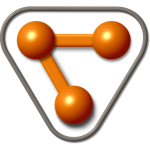MusikMesse 2010
Going to MusikMesse was lot of fun. First of all, I have been able to meet my friends, the CopperLan team, who were showcasing their new developments.
CopperLan is a new protocol for music and pro-audio that makes it easy to connect and control software and devices. It is self-configuring, plug and play, backwards compatible with MIDI.
 CopperLan, unlike MIDI, is very easy to use. You just plug things together, and play with them. It lets you access the parameters of compatible software and devices in human readable form, it is fast, reliable, and can be used to control MIDI devices with almost no effort. I really hope this protocol will become popular because it will help solving lots of trouble we have with current protocols: MIDI is not precise enough and requires some knowledge to know what you are doing, and OSC suffers from network configuration, which can be tedious to deal with. Hopefully, CopperLan makes all this a thing of the past.
CopperLan, unlike MIDI, is very easy to use. You just plug things together, and play with them. It lets you access the parameters of compatible software and devices in human readable form, it is fast, reliable, and can be used to control MIDI devices with almost no effort. I really hope this protocol will become popular because it will help solving lots of trouble we have with current protocols: MIDI is not precise enough and requires some knowledge to know what you are doing, and OSC suffers from network configuration, which can be tedious to deal with. Hopefully, CopperLan makes all this a thing of the past.
I also had the chance to meet the Elektron guys. I have to say I am a big fan of their product since a long time. At its beginnings, my band Neïmo, didn’t have a real drummer. Because we just needed to travel light, and wanted something that had a modern sound, we chose the MachineDrum as our drummer. So it was a real pleasure to meet the ones who invented what gave the sound to our first album.
There was also a rather impressive demonstration of the Reactable Live. This is a touch enabled table, with a projector inside that produces sounds that are controlled by a set of “fiducial” symbols you put on the table. To better understand how it works, take a look at this video of Björk performing with the Reactable.
